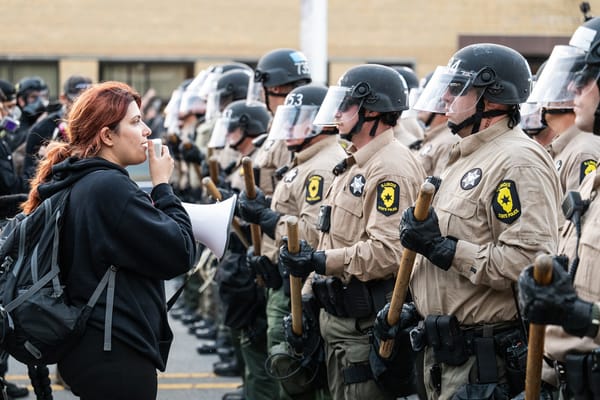Building a wide news commons

Doc Searls writes about what he calls wide news:
Local and regional papers covered politics, government, crises, disasters, sports, fashion, travel, business, religion, births, deaths, schools, and happenings of all kinds. They had reporters assigned across all their sections. No other medium could go as wide.
Doc’s argument is that a local commons of publications can, together, create a wide news ecosystem that fulfills the same role (with potentially deeper content). I agree.
I started my career building the first website and BBS for a local paper in Oxford that carried classified ads as well as event listings, notices, and that sort of thing: all the community stuff that the internet took over from newspapers. (As it happens, it’s still around, but most are not.) It was a real community hub, to the extent that anyone could come to the office to do some word-processing or get their photocopying done: a co-working space in the midst of the paper’s offices, long before anyone knew what co-working was.
Social media — and early on, blogging in particular — has played this role of reporting widely around a community. You could click through to local blogs, or Twitter, and learn about things that happened around your town. I found this particularly useful when I visited somewhere I didn’t live: for example, on my regular visits to San Francisco, I’d check out the blogs and Upcoming to see where I should be going.
But as social media has consolidated, many of those venues have gone away. (Some were replaced by Twitter bots, which have now also gone away.) It’s also easier to discover some types of voices than others: for someone to post regularly to the internet, they need to have a certain level of free time, technical prowess, equipment at their disposal, and so on. And it’s easier for someone in an “in” crowd to be linked to and re-shared than an entirely new voice with an underrepresented perspective, who might not have the same level of systemic support.
While newspapers are obsolete technology, local newsrooms are vitally important: journalists have a remit to tell stories that might not otherwise be told. That might be a story about corruption in the local police or government (which occurs a surprising amount of the time), but it could just as easily be a story about an immigrant starting a new business, or a trend piece centered on a less-affluent part of town.
I really love what Tiny News Collective is doing here. From its website:
Have you struggled to find stories relevant to you and your community in existing media? Do you worry that lack of information keeps people from being involved in important local issues? Has it been your dream to see your community represented accurately and thoughtfully in the media?
The organization then provides the funding, technology, training, and network to get those newsrooms started. Consider Austin Vida, which reports with a Latinidad perspective from Austin, or Ang Diaryo, which reports with a lens centered on working class Filipino communities in Los Angeles.
Locally to me, Kensington Voice reports on a neighborhood in Philadelphia that normally is the subject of stories about addiction (including a New York Times piece that called it the “Walmart of Heroin”). The real, three-dimensional human beings who lived there were woefully underserved, until journalists began to report on their actual stories. These weren’t holes that social media could adequately fill; nor were they covered by the local newspaper of record.
With a skeleton team, Open Vallejo reports on the North Bay town that happens to have one of the most corrupt police forces and local governments in the country. It’s rightly won awards for its work.
I’ve fallen in love with these kinds of small, tightly-focused, non-profit newsrooms. One thing that’s missing is a way to find all the newsrooms that cover a geographic area, or a particular demographic, or other focus area. I want to be able to discover stories from newsrooms I’ve never heard of, based on their characteristics. I might have never heard of a particular newsroom in Philadelphia, but I have heard of Philadelphia, and happen to live there. It would be great if I could click through a website to find everyone publishing about communities in the city. The front page of that site — which, in essence, would be a specialized feed reader — would be better by far than any large newspaper.
To make that really viable, there needs to be a flowering of tightly-focused newsrooms — and people to fund their reporting. Crowdfunding, direct sales, or subscriptions are not always the right approach, because, for example, people in a less-affluent community are typically less able to pay, while their stories are no less valuable. Just as bloggers are less likely to write from the perspective of communities that can less afford computers, broadband internet connections, and the time to write, funding dollars must sometimes be found elsewhere. Tiny News Collective is wonderful, as I mentioned. The Brown Institute for Media Innovation’s Local News Lab does great work, albeit around business innovation rather than direct funding. And there is some wider foundational support. Still, making more support available for these newsrooms would go a long way.
All of this is not to say that personal sharing and social media aren’t valuable. They clearly are, and a lot of people are reporting their perspectives and sharing what they love about their communities. We need more of this, too! One of my favorite local social media accounts is Caffs not cafes, which reports on small, independent, usually low-budget restaurants and cafes in London. Sure, it’s not breaking news, but who else would do this kind of local coverage of diverse businesses, many of which have immigrant owners?
A wide news commons, comprised of many smaller newsrooms with specific areas of focus, as well as the perspectives of individuals in the community, would improve our democracy at the local level. In doing so, it would make a big difference to how the whole country works. I’d love to see us collectively make it happen.

